What out what time of year blood oranges are in season, what types are out there, and where you can find them near you. Also hear about some new varieties that are blood oranges crossed with other types of citrus.
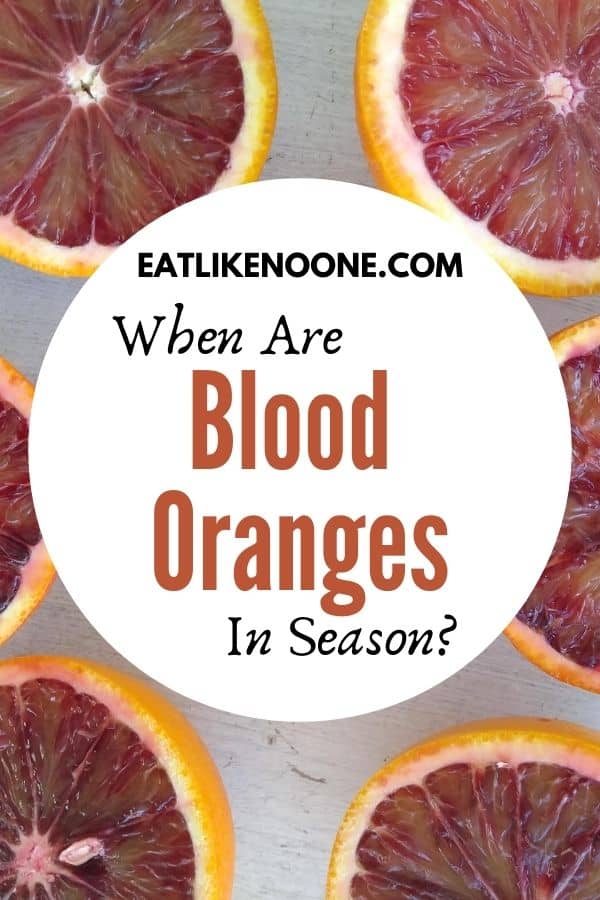
This post includes affiliate links. This means that, at no additional cost to you, I will earn a commission if you click through and make a purchase. These are products and services I recommend because I use or trust them. Cookies will be used to track the affiliate links you click.
Oranges are orange.
Except when they are not. Well all oranges are orange on the outside (until the day I discover one that isn't), but not all are orange are the inside. UPDATE - The day came when I discovered that one isn't! Actually oranges that are grown in super warm climates, that never experience cold temperatures never turn orange on the outside at all!
A beautiful array of colors inside the orange are out there for our enjoyment.
One of the funniest has to be the blood oranges. They can range in color from dark purple to all different shades of red. I have had some that had a rainbow of reds, yellows, and oranges.
Blood oranges have a unique taste that is quite different from everyone's favorite Navel. Unlike the Navel, blood oranges can't be found in stores year round. So sometimes you may not be able to find them. They have a season in which to enjoy them.
Let me tell you all about it.
Jump to:
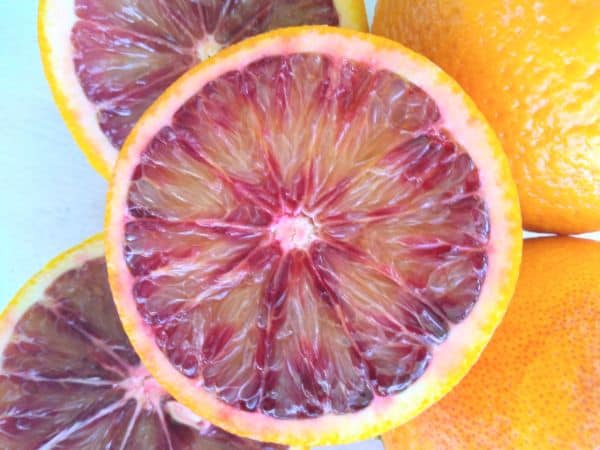
❄️ When in Season?
Generally the blood orange season runs from December to May or June. Peak time is February to April. Imports can also be found when out of season.
The first blood oranges of the season show up before Christmas. The first ones usually don't appear any different than any other orange. There is no red showing on the outside like you will see later in the season.
Flavor is not there either. I wouldn't spend my money on them until the calendar turns over to a new year.
February to April seems to be the sweet spot in terms of cost, selection, and quality.
They seem to be lasting more into spring now than in past years. I can't speak much for the quality than as usually that time of year I am more interested in peaches and cherries.
In late summer you may find some that are imported from Southern Hemisphere countries.
👅 What Do They Taste Like?
Most people seem to describe blood oranges has having a "raspberry" like flavor to them. I think that is accurate. They have a berry like flavor that is generally tart depending on what variety - more on varieties below.
The blood orange differs from the red/pink fleshed Cara Cara, which is less acidic. so it's sweet flavor shines through more.
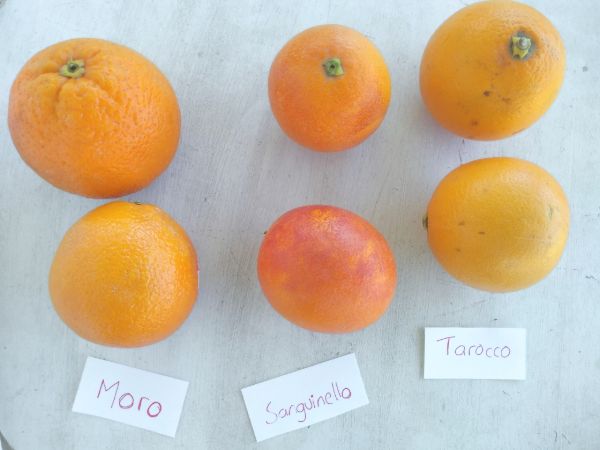
🍊 Varieties
Most people may not know that there are actually different varieties of blood oranges. The grocery stores often just label them all blood oranges.
The skin color of each variety can change depending on how long they were on the tree and how much cold was exposed to their skin. It's my understanding that cold brings out the reddish color you see on some blood oranges. I have seen some in the past that almost match the color on the inside (although I didn't get any photos of those ones).
Let me go through the 3 major types of blood oranges that I have tried, along with some new varieties that are derived from them.
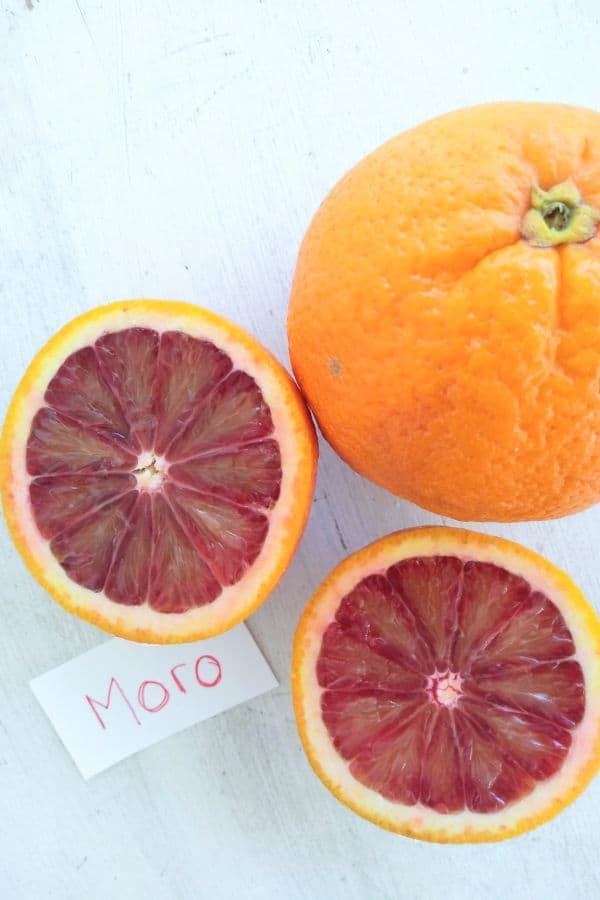
Moro
The one that you find almost every time is the Moro blood orange, it is by far the mode widely grown. These ones tend to have the darkest color inside. A mature one can be dark purple on the inside while being nearly completely red on the outside. Even if it's orange on the outside, the flavor can still be good.
The Moro has a good amount of tartness and is my favorite for using in recipes. However it's not my favorite for just eating out of hand.
You can peel them by hand but it can be a little tricky. Not as easy as a mandarin or even a Navel orange.
Moro blood orangs are the first variety on the market in December, but really aren't that good until we get more into the winter.
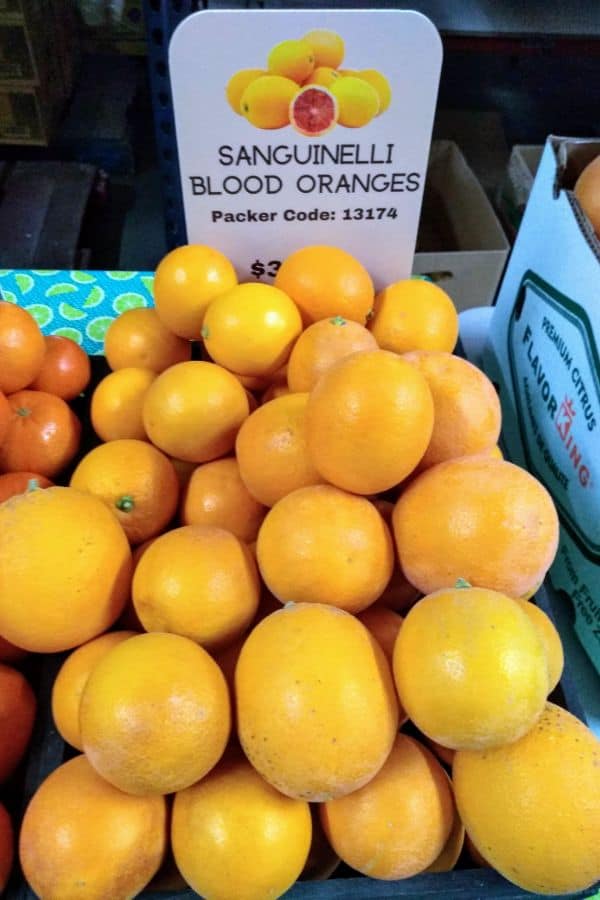
Sanguinello
This has a very Italian sounding name. You can tell these from Moro as they have a less rounded, more elongated shape.
The flavor is very similar to Moro. I didn't really notice a difference until I tried it side by side with a Moro and I felt that is had better flavor. Not more than a subtle difference.
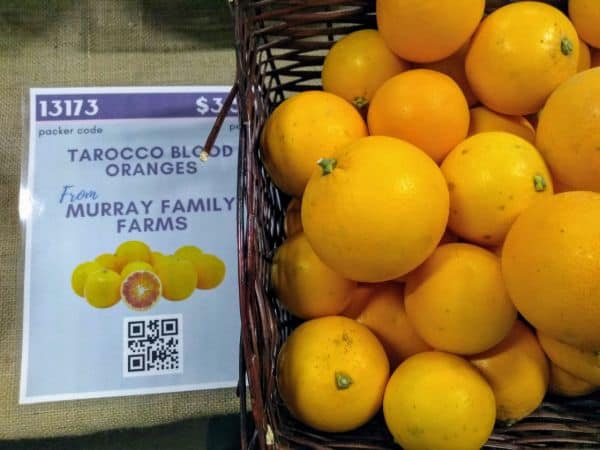
Tarocco
Tarocco blood oranges are a whole different story. These are by far my favorite for eating out of hand. They tend to be less acidic and have a sweeter, more fruity flavor. For me they are right up their with the Sumo mandarin as my favorite piece of citrus.
The color inside isn't as dark as the other varieties. It's more of a rainbow of yellow, orange, and red. Quite beautiful as the picture below showcases.

As for peeling the skin, these I find to be the easiest to peel. They are no more different than a Navel orange.
They can be a challenge to find, especially when most stores just sell all blood oranges under the label blood orange. If you can find them, snatch them up. I have seen them at Trader Joe's in the past, but not lately. I have also found them imported from Italy at Meijer stores in Michigan. Or you can order them from Specialty Produce out of San Diego.
When I do find them it tends to be latter in the season, although I have gotten some in late January that were really good.
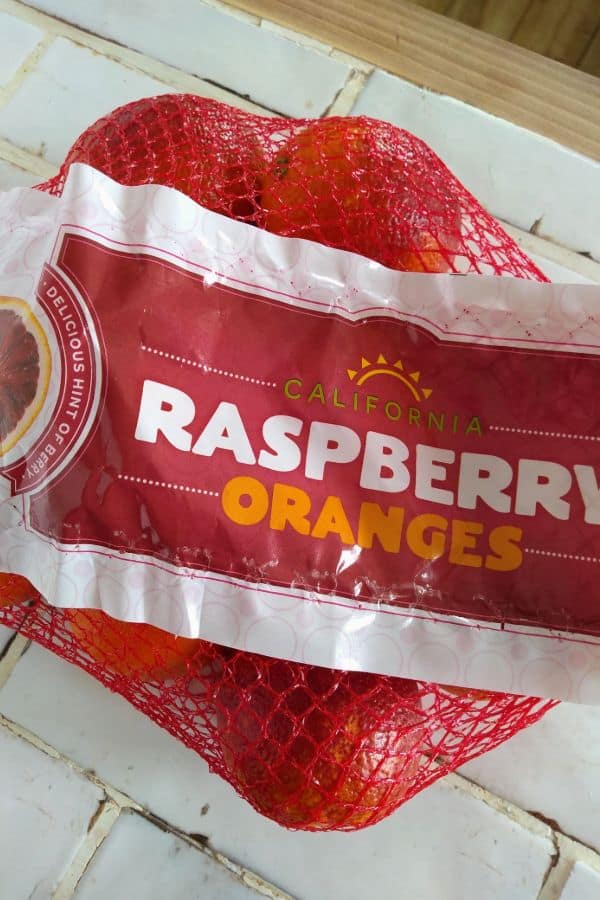
🔴 Raspberry Oranges
If find a bag of Raspberry Oranges these are actually just any type of blood orange as raspberry oranges. I expect most of them are going to be the widely grown Moro. Kings River packages them this way to try to increase sales by focusing on the raspberry like flavor.
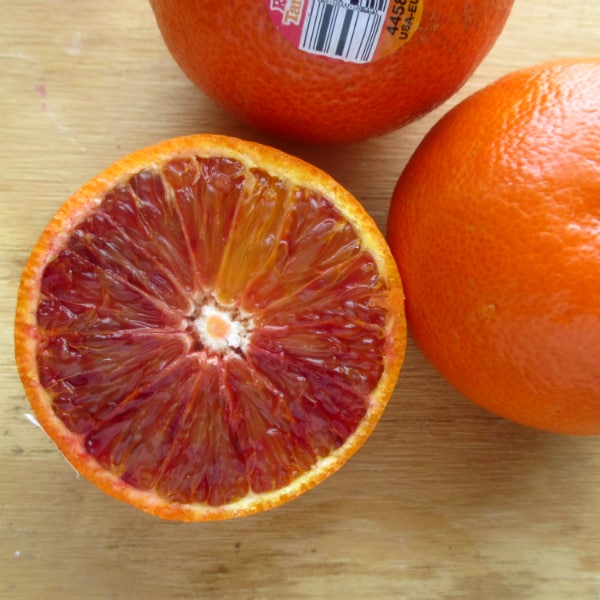
Mixed Types
In the last few years some new varieties have arrived on the market that are a cross between a blood orange and another type of citrus! These are really exciting.
A blood orange and a Clementine mandarin were crossed to create the Ruby Tango mandarin. It peels like a mandarin with the flavor of a blood orange. Look for them February to April.
A Pummelo was crossed with a blood orange and mandarin - the Valentine Pummelo was born. This pummelo is red on the inside and has the shape of a heart when slice in half. The name thought actually comes from the fact that is ripens around Valentine's Day.
Make sure to check out my review of the Ruby Tango mandarin.
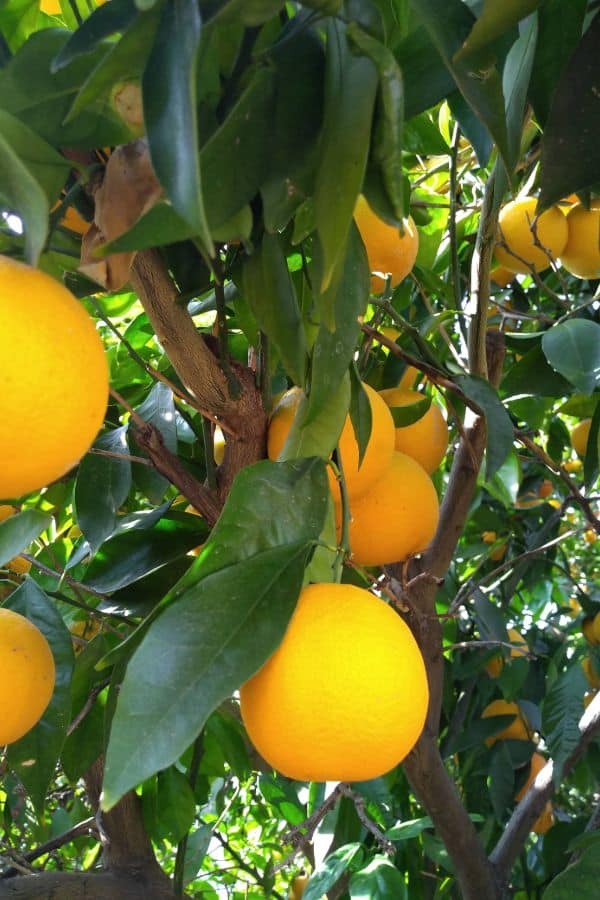
🌳 Where are They Grown?
If you are in a grocery story you are pretty much guaranteed they will be coming from California. The only real exception is when they are imported when California ones aren't in season.
I have on occasion got some blood oranges that were imported from Italy. They are were the Tarocco variety and they were amazing. I have been to Florida during the winter season and did not find any growing there. Lots of signs down there advertising for Red Navels, which are just Cara Cara navels.
🛒 Where to Buy
Trying to find blood oranges near me? If you are looking to track down some blood oranges, you should be able to find them in most grocery stores. Here are ones that I can confirm. I do not recall seeing them at Costco before, but if you have, leave a comment below.
- Central Market
- Food City
- Food Lion
- HEB
- Hy-Vee
- Kroger
- Meijer
- Sprouts
- The Fresh Market
- Trader Joe's
- Walmart
- Winco Foods
- Wegmans
- Whole Foods
They are not too hard to track down anymore. A lot of the time you will find them in bags. Kroger stores have them under their Private Selection label. Also they are sold by pound.
If you are looking for a specific type of blood orange than that is a lot harder. Almost all of the blood oranges in these stores are Moro. Rarely are you given that information at the grocery store unless they are not Moro. Occasionally I have seen bags of Sunkist blood oranges labelled as Moro.
When I have found Tarocco blood oranges they have been labelled that way.
💲 Why are They So Expensive?
Blood orangs typically run more than Navel oranges. I would say around $2 a pound is what I find to be the average price. Usually at least once a season I will find a store that has them on sale and I can get them for less.
They are not as widely grown as Navel or juicing oranges, which often the market is flooded with. So there are less oranges on the market. So it's a supply and demand thing.
🧃 Can You Juice Them?
Absolutely you can juice them. I usually do so with my Kitchen Aid Citrus juicer attachment. I use them in the following recipes.

🥄 Recipes
The unique flavor of the blood oranges and it's eye appealing color make it a great choice to use in many recipes. Here are some of my favorite
- Blood Orange Granita - A refreshing retreat, made of small ice crystals that can be made in the freezer without any special equipment. You got a pan and a fork you can make it.
- Blood Orange Sherbet - Take Alton Brown's recipe for orange sherbet, and replace the regular orange juice with blood orange juice.
- Blood Orange/Strawberry Jam - How to make a small batch of strawberry jam using blood oranges to up the flavor ante.
Or a simple thing to do is buy plain Greek yogurt, stir in some freshly squeezed blood orange juice and some orange blossom honey.
What is your favorite way to enjoy blood oranges? Leave a comment below.


Leave a Reply